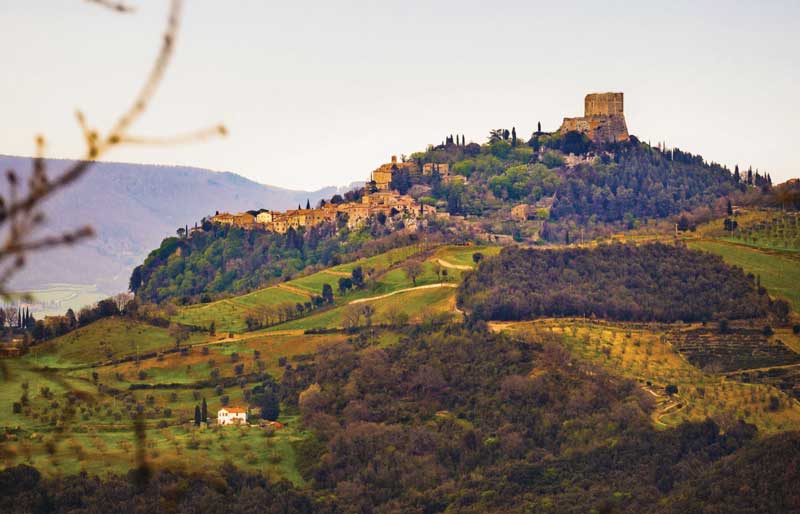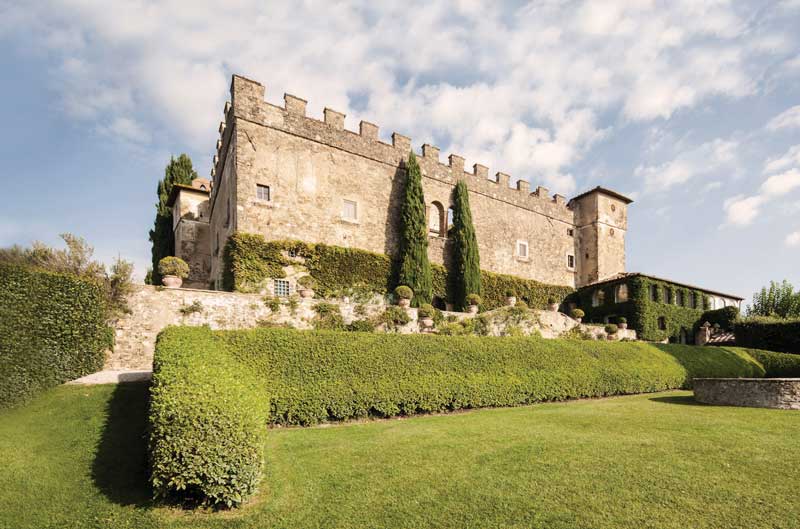Tuscany has more to offer the wine lover: classified vineyards, charming medieval towns and places to appreciate the Italian artistic heritage.
The region of Tuscany in Italy, adorned by the Alps that give it a natural landscape, lets the Sangiovese mature slowly, waiting for more tourists to get to know it.
Those who want to make an oenological tour in the area must first arrive in Florence, the city embellished by Leonardo Da Vinci, rent a car to start the route that should mark – if you have at least a week to visit – the walled villages of the provinces of Arezzo, Florence, Siena, to know, from the voices of their producers, which are the Denominations of Origin (Controlled and Guaranteed), that want to stand out on the international market.
From Chianti to Supertoscano
Tuscany is characterized by its vineyards, which are scattered among the gentle hills where the best appellations are located; starting with the Chianti region, located in the center of Italy, it includes several provinces, among which Florence and Arezzo stand out.
If the objective is to visit the vineyards, it is recommended to stay in a Bed & Breakfast, which in this region are country houses surrounded by small vineyards – sharing the land with olive trees – for artisan productions.
Situated on a hill between Florence and San Gimignano, the town of Montespertoli (Chianti subzone) is an ancient noble settlement. Near the main square you will find the Enoteca I'Licchio, run by Gabriele Savarese and Daniel Chazarreta, a small but interesting bistro with a shop selling local Giantis and regional wines.
This happens in Tuscany: small villages far from the Florentine tourism, where you can always find spaces promoting Sangiovese bottled in a Chianti Classico or supertoscanos that gave a chance to Cabernet Sauvignon.
Going south, without stopping in Pisa, on Strada della Paneretta (number 35) is the Castello della Paneretta, sheltered by the Elsa Valley, from which San Gimignano can be seen. The castle was built around an ancient tower that belonged to the Vettori family and later to the Strozzi family. Finally, in the 80's it was acquired by the Albisetti family. Here is produced a Chianti Classico Riserva, which combines 90% Sangiovese and 10% Canaiolo.
The walled city of Livorno is just over an hour's drive from San Gimignano. It is also a port city where you can rent a yacht to explore the Costa Dorada.
The first Italian super Tuscan was born near Livorno. Mario Incisa, the Marquis Incisa della Rocchetta, who founded the farm Tenuta San Guido, where he produced a wine called Sassicaia, blended mostly Cabernet Sauvignon grapes (85%) and Cabernet Franc (15%), which led to obtain, in 1983, the DOC Bolgheri, and in the nineties the DOC Bolgheri Sassicaia appellation was formalized.
Wine Brunello and Nobile di Montepulciano
Visiting Tuscany means going to its villages, inhabited a few centuries ago by the Etruscans. In the province of Siena (a stop in the city of Siena should be included) are the municipalities of Montalcino and Montepulciano; both with roots in the Etruscan culture, so their medieval legacy can be seen in their ancient buildings. However, they are small towns that are essentially walkable, becoming romantic among wine, trattorias and archaeological remains.
Montalcino is glorified for the selection of Sangiovese grapes specified as Bunello, the DOCG is Brunello di Montalcino. Many families have come to this Italian region and put down roots to produce Italian wines. For example, Fabian Schwarz, founder of La Màgia winery, integrates sustainable methods to produce an organic Brunello di Montalcino, a red wine with an elegant finish. Fabian's vineyard is planted with Sangiovese; they are good hosts to learn about their production by appointment.
In addition to the wineries near Montalcino, the church of San Agostino and La Fortezza are of tourist admiration. Not to be missed is a wine tasting at the Enoteca La Fortezza, the first to be opened in the town (1980) on the initiative of Mario Pianigiani and Marzio Giannelli.
Less than an hour from Montalcino is another medieval hilltop village: Montepulciano. Along the Via di Gracciano nel Corso there are several wine cellars, both modern and traditional. The cellars are known in Italian as cantinas, where guided tastings are held. At the Enoliteca del Consorzio Vino Nobile di Montepulciano you can taste the different aromatic expressions of a Montepulciano Nobile and the prestigious Vin Santo.
The place has self-service tasting machines. It is enough to get a card with an integrated chip to pour a glass or a 33 ml tasting; the choice of the wineries: Poggio Alla Sala, Il Macchione, La Calonica, Villa I Cipressi, Le Bèrne, Crociani, Serraglio. In its tasting room, which is also a protected museum, there are 100 labels at the feet of oenophiles.
Italy has had a hard time gaining recognition for its qualitative merits. Tuscany, in addition to being a region of cypress hills and vineyards, is proof that Italian producers have a true passion for winemaking.
Where to stay
Villa Sassolini. In the province of Arezzo, in the small town of Moncioni, is the boutique hotel Villa Sassolini. The interior was designed by Massimo Tani; clocks, mirrors, tables, lamps and frames were created in collaboration with Arti e Mestieri.
As part of the culinary experience, Giuseppe Lo Presti runs the kitchen. While the pasta is cooking, you can admire the Valdarno Valley. For an intimate dinner, reservations are available at Riccardo Costanti's Cucina.
Villa Biondi by Rosewood. Villa Biondi (Rosewood Castiglion del Bosco, Tuscany) is a five-bedroom Tuscan residence where the private chef prepares traditional meals using vegetables from the garden. The hotel's most spectacular feature is its unobstructed view of the Val d'Orcia, a Unesco World Heritage Site.
www.rosewoodhotels.com/en/castiglion-del-bosco/accommodation/villas/villa-biondi
Text: Cindy Agustín ± Photo: El Vaijero Feliz, Planeta Hotel, La Paneretta, Alejandro Chiarini, Caption, La Paneretta








